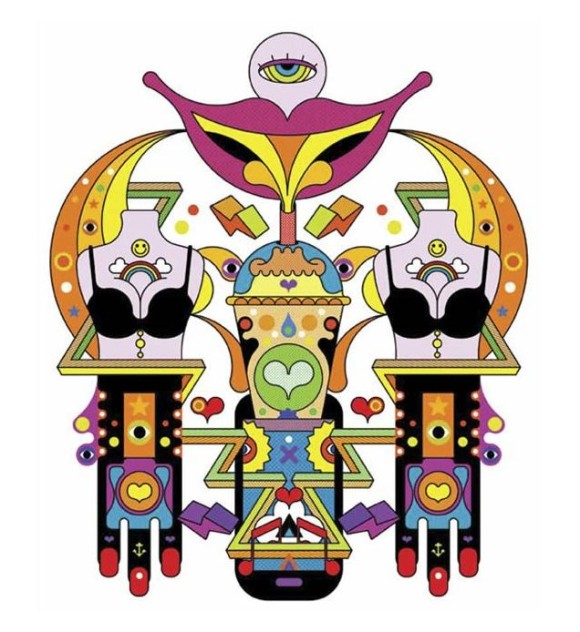I’ve been thinking a lot about the idea of “conspicuous experience” this year – the idea that our experiences are becoming a greater status marker than our possessions, especially through the lens of social media. After going on about it to friends and colleagues for months, Viewpoint allowed me to turn my ramblings into a feature, an extract of which you will find below…
Post-recession, there’s still not much money to go around, which is leading many consumers to focus their spending on experiences that boost memories, relationships and sense of adventure, rather than products that will lose their thrill or usefulness quickly.
Unusual events have almost become the norm for urbanites, who flock to site-specific cinema nights, secret supper clubs, salons, lectures and neighbourhood festivals. Pop-up events have gone mainstream, as consumers realize their value lasts long beyond the event: a one-time event can offer more surprise and discovery than even the most longed-for product. Brands have swiftly jumped on the bandwagon, with every household name creating pop-ups to launch or celebrate the experience of using key products, from Nike’s Feel London “exploration space” to Magnum ice-cream bars’ Pleasure Store in Toronto. While consumers continue to appreciate innovative and immersive brand experiences, they’re also looking for unique and personal experiences that help express and build their own identity.
As Elizabeth Dunn and Michael Norton, authors of recent book Happy Money: The Science Of Smarter Money, write, “Dozens of studies show that people get more happiness from buying experiences than from buying material things. Experiential purchases — such as trips, concerts and special meals — are more deeply connected to our sense of self, making us who we are”. In the book, Dunn and Norton highlight 5 ways for people to gain greater happiness from their spending: the first is “Buy Experiences”.
Tom Marchant, co-founder of experiential travel company Black Tomato, believes, “People are realizing that its experiences that give colour and richness to their lives – they are defining themselves by what they’ve done.” Even luxury consumers are refocusing their spending on experiences, rather than goods. A Boston Consulting Group study found that sales of luxury experiences outpaced luxe goods by 50% in 2012, with even consumers in emerging markets beginning to switch their allegiances from branded goods to indulgent experiences. “All over the world, luxury shoppers tell us they’d rather spend more on experiences than on clothes and jewelry. They’ve gone from ‘all my friends and I wear Cartier’ to ‘I cherish spa days with my friends,’” says Michelle Eirinberg Kluz, a Boston Consulting Group principal. “Although experiences are more intangible than an item, consumers consider them more memorable.”
But they’re not exactly keeping these extraordinary experiences under their hats – sharing (and even showing off) details of their experiences seems to be a key element of their personal value. James Wallman, author of Stuffocation, points out, before the advent of social media, status symbols only needed to be visible to those physically nearby: “what you owned – car, handbag, branded clothes – counted much more in terms of signifying status. After all, who knew you’d just been to the latest restaurant or away for the weekend?” But now, with the world increasingly viewed through the prism of Facebook, Instagram, Vine, Twitter and even Snapchat, what people do has more impact than what they have. “Because of how many followers and friends you have on Facebook and Twitter, far fewer people will actually see you driving your swanky car or holding your fancy handbag than will know that you’re sitting on a chair lift in Chamonix, watching the sunset from the rooftop of your riad in Marrakech, or playing golf on the roof of Selfridges”, says Wallman.
This conspicuous experience can be showcased through stories at dinner parties or over fences or watercoolers, but is most powerful when told and filtered through social media. As edible experiences guru Sam Bompas of Bompas & Parr told me, “Consumers need to have more creative lives now – it’s no longer good enough to just go to the pub on the weekend. People feel they have to do something fantastic, and get the pictures to prove it”.
When it comes to experiential spending, travel tops the list for many consumers. Marchant says, “Many people don’t see travel as discretionary spend – they’re still pursuing value, but travel is something they’re less willing to give up. It’s something they can look forward to, so they’re willing forgo spending on other items”. According to McKinsey research, 30% of European luxury consumers are willing to spend less on luxury goods in order to afford experiences such as travel, while a TripAdvisor survey in Spain found that 58% of consumers would sacrifice buying new clothes to afford a holiday, while 55% would buy fewer gifts and 50% would reduce their alcohol consumption.
A key part of many trips is the ability to share the experience, whether through Facebook albums, live tweets or instant Instagram shares. Some travel companies are leveraging conspicuous experience to weave status updates right into the itinerary. A French ski resort in Vars enables has installed video cameras to capture skiers and snowboarders best tricks, which can be posted directly to Facebook. In Majorca, Sol Wave House has transformed itself into a Twitter-themed hotel, which allows guests to order room service or drinks by the pool via tweets. Sydney’s Instagram-themed hotel, 1888, all rooms are decorated with blown-up Instagram snaps (as well as the kind of nostalgic/authentic décor Instagrammers favour), plus a booth in the lobby for “selfies” (self-portraits captured by a smartphone camera), while guests with over 10,000 followers on the app, or those who take the best pictures of the hotel, can get a free night’s stay.
Images from top: Nike Feel London; Casestagram; Sol Wave House





